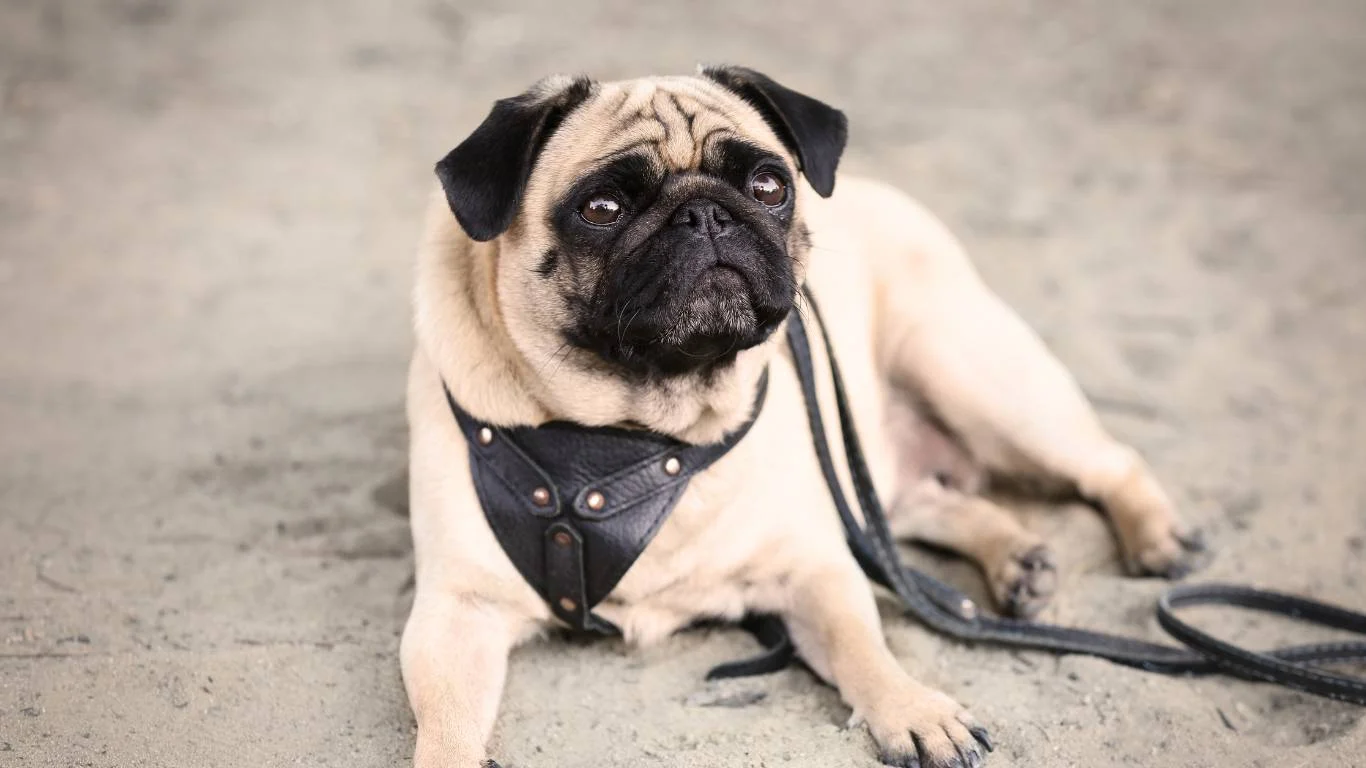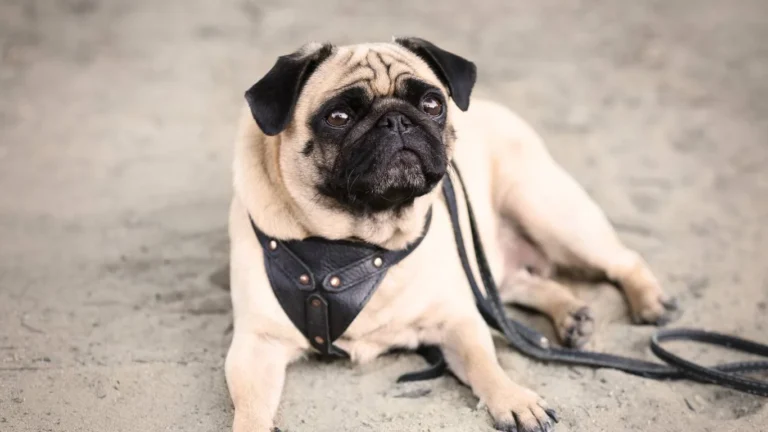Worried About What Causes Blood in a Dog’s Stool? Read This
If you’re here because you’re wondering what causes blood in a dog’s stool, you’re not alone—and as someone who’s worked hands-on as a Veterinary Assistant with a special focus on pet nutrition, I can tell you this is one of those symptoms that can range from “not-so-bad” to “drop-everything-and-go.” I’ve had plenty of worried pet parents call in after spotting a streak of red in the yard or during a routine poop-scoop. It’s alarming, for sure—but it’s not always as scary as it looks. Let’s break it down together so you can feel a little more confident about what might be going on with your pup.
Understanding the Types of Blood in Dog Stool

Bright Red vs. Dark Tarry Stool
So here’s the first big clue: the *color* of the blood. Bright red blood, known as hematochezia, usually indicates that the bleeding is coming from the lower part of your dog’s digestive tract—think colon or rectum. I’ve seen this with dogs who’ve strained during bowel movements, had a sudden diet change, or even picked up a bacterial bug at the dog park.
Dark, tarry stool (called melena), on the other hand, is digested blood. This kind is more serious and typically means there’s bleeding somewhere higher up in the digestive tract, like the stomach or small intestine. When I see melena in a stool sample under the microscope, my vet radar goes off immediately—it’s a sign we need to dig deeper, no pun intended.
Common Causes: From Mild to Medical Emergency
Here’s a quick rundown of the most common culprits I’ve come across in the clinic:
- Dietary Indiscretion – a.k.a. your dog ate something they weren’t supposed to. Garbage, fatty scraps, or a sudden food change can cause gastrointestinal upset and bleeding.
- Parasites – Hookworms, whipworms, and giardia are all common troublemakers that can cause bloody diarrhea, especially in puppies or dogs who spend a lot of time outdoors.
- Bacterial Infections – Think salmonella or E. coli. These often show up with symptoms like vomiting, fever, and lethargy, along with blood in the stool.
- Stress or Colitis – Yep, dogs can get stress colitis. I’ve seen it a lot in shelter dogs or pets boarded for the first time. Blood, mucus, and loose stools are the telltale signs.
- Anal Gland Issues – If your dog’s anal glands are impacted or infected, they might scoot or lick excessively—and sometimes you’ll notice blood when they poop.
- Serious Illnesses – Unfortunately, cancers, bleeding disorders, or autoimmune diseases can also cause bloody stool. This is when getting professional help fast is crucial.
When to Worry: Red Flags That Mean It’s Time for the Vet

Know the Accompanying Symptoms
I always tell clients not to panic at the first sign of blood, but to keep an eye on the big picture. Here are some signs that should prompt a vet visit right away:
- Repeated bloody stools or diarrhea lasting more than 24-48 hours
- Lethargy, vomiting, or refusal to eat
- Bloated or painful abdomen
- Weight loss or sudden behavior changes
- Stool that looks like coffee grounds or tar
If your pup checks more than one of those boxes, don’t wait. I’ve seen cases go from “mild irritation” to “emergency surgery” in the span of a day.
Diet and Nutrition: Why It Matters More Than You Think

How Diet Can Trigger Bloody Stool
Here’s where my nutrition background really comes into play. A lot of people don’t realize how sensitive a dog’s digestive system can be to what they eat. I once had a sweet lab named Buddy who started passing blood after his owner switched him to a “high-protein raw diet” overnight. Turns out, the sudden change caused intense gastrointestinal inflammation. After easing him back into a bland, balanced diet—under vet supervision, of course—his symptoms cleared up in just a few days.
Things like food intolerances, poor-quality ingredients, and even overly rich treats can lead to bloody stools. That’s why I always recommend a gradual transition between dog foods and sticking to brands that prioritize digestive health.
What Your Vet Will Look For When There’s Blood in Your Dog’s Stool

Getting to the Bottom of It (Literally)
When I assist during vet exams involving bloody stools, we usually start with a lot of questions. It might feel like an interrogation, but every little detail matters. Things like how long the blood’s been showing up, whether it’s bright red or dark, if there’s diarrhea or vomiting too—all these bits help paint a clearer picture.
Your vet might run a few different diagnostics to figure out what causes blood in a dog’s stool. From what I’ve seen, the most common tests include:
- Fecal Exam – To check for parasites like giardia or whipworms. This is a must, especially for younger dogs or rescues.
- Blood Work – To rule out systemic infections, organ issues, or clotting disorders. If your pup’s lethargic or not eating, this is a likely step.
- X-rays or Ultrasound – To look for blockages, tumors, or anything weird going on inside the abdomen.
- Endoscopy – Sometimes, when all else fails, we need to actually look inside with a scope. It’s not common, but I’ve seen it used in mystery cases that just won’t resolve.
Sometimes, even after all that testing, we don’t get a super clear answer right away. But that doesn’t mean there isn’t a plan—most of the time, vets will still start treatment based on the most likely cause and how your dog responds.
Home Care Tips for Mild Cases

The Power of a Bland Diet
Okay, so let’s say your dog has a mild case—maybe a little bright red blood, no major symptoms otherwise, and your vet isn’t too alarmed. In these situations, one of the first things I usually recommend is switching to a bland diet temporarily. Think boiled chicken and plain white rice. It’s gentle, easy to digest, and gives the gut a little break.
Back when I worked in a high-volume clinic, I kept chicken and rice portions stocked in our pet fridge—no joke. We’d send clients home with pre-packed bland meals and instructions to monitor for 2–3 days. It works wonders for mild irritation or dietary issues.
Hydration Is Key
If your pup has loose stools along with the blood, keeping them hydrated is *so* important. Dehydration can sneak up quickly. Encourage water, and if your vet approves, offer a little unflavored Pedialyte to help replace lost electrolytes.
Probiotics and Supplements
I’m a big believer in gut health—especially after dealing with so many dogs that came in with chronic tummy troubles. Adding a high-quality probiotic (ask your vet for a recommendation) can help restore balance in the digestive tract. I’ve seen pups bounce back faster when we add these into the mix early.
Preventing Future Episodes

Keeping That Gut Happy
After your dog recovers, the next question is—how do we stop this from happening again? The best prevention starts with knowing your pup’s habits and keeping things consistent.
- Stick to a stable diet – Avoid frequent food changes, and steer clear of table scraps or rich treats. I’ve seen many digestive issues start with “just one bite” of human food.
- Watch what they sniff out – Garbage, old bones, spoiled meat—dogs have a nose for trouble. Use a leash during walks if your pup tends to scavenge.
- Routine deworming and parasite prevention – Especially if you live in an area with lots of wildlife or communal dog parks. I always recommend year-round protection.
- Reduce stress where possible – Believe it or not, stress plays a role. A major life change (like a move or a new pet) can upset your dog’s tummy just like it can ours. Try to keep their routine predictable and enriching.
Know Your Dog’s Normal
Last but definitely not least, get familiar with what your dog’s poop normally looks like. Yeah, I know—it’s not glamorous. But when you’ve seen the norm, it’s way easier to spot when something’s off. I tell pet parents all the time: the more you observe, the better you can advocate.
One of my favorite patients, a spunky rescue named Luna, had occasional GI issues due to stress. Her owner became a pro at spotting early signs just from subtle stool changes—seriously saved Luna from more than one ER trip.
What If It Keeps Happening?

Chronic or Recurring Blood in Stool
Alright, let’s talk about when the issue becomes more than just a one-off situation. I’ve seen some dogs come into the clinic with ongoing or recurring bloody stool, and trust me, those cases can be frustrating for both pet parents and the care team. If your dog keeps having episodes, especially after trying all the basics—bland diets, probiotics, dewormers—it’s time to dig deeper.
In my experience, these are some of the more stubborn causes behind repeat issues:
- Food Sensitivities or Allergies – These can sneak up over time. I worked with one pup, Bailey, who turned out to have a protein intolerance. Once we did an elimination diet (under vet supervision), the bleeding and digestive issues practically vanished.
- Inflammatory Bowel Disease (IBD) – This one’s tricky. It mimics a lot of other conditions but sticks around. Dogs with IBD may need special prescription diets or even steroids long-term.
- Tumors or Polyps – Especially in older dogs. Sometimes, small masses in the colon or rectum are to blame. These cases often require imaging or biopsies to confirm.
- Chronic Parasites or Gut Imbalances – Even if you’ve dewormed before, some parasites like giardia can be persistent. And if the gut flora is off-balance, it can trigger ongoing inflammation.
Bottom line—don’t settle for “it’s just stress” if the issue keeps coming back. Your dog deserves a thorough work-up, and there are usually answers (and solutions), even if they take a little time to uncover.
What Not to Do If You See Blood in Your Dog’s Stool

Common Mistakes I’ve Seen Over the Years
Having worked with countless concerned pet parents over the years, I’ve noticed a few common slip-ups that can actually make things worse. No judgment here—we all just want what’s best for our furry family members. But just in case, here’s a quick list of what *not* to do:
- Don’t panic and Google-diagnose everything – Yes, you’re here reading this, and that’s great. But I’ve seen folks delay care because they got caught up in internet rabbit holes. When in doubt, ask a pro.
- Don’t give human meds without vet approval – I once had a client give their dog Pepto-Bismol without realizing it contains salicylates—bad news for some dogs. Always check first.
- Don’t wait too long to get help – Especially if you see worsening symptoms like vomiting, weakness, or black stool. Fast action can be the difference between a quick recovery and a serious issue.
- Don’t switch foods too fast – Even with good intentions, rapid diet changes can make gut issues worse. Transition slowly over several days unless your vet says otherwise.
When to Seek a Specialist
Most bloody stool cases can be handled by your regular vet, but sometimes, you need to bring in a specialist—usually a veterinary internist or gastroenterologist. If your dog has had extensive testing and treatments without much improvement, or if the vet suspects something complex like IBD or cancer, it might be time to get that referral.
I remember one older golden retriever who struggled with chronic digestive bleeding for months. After seeing an internal medicine specialist and doing an endoscopy, they found a benign polyp causing all the trouble. It was removed, and the pup was back to normal in no time. Sometimes, getting that second set of eyes makes all the difference.
Final Thoughts from a Vet Assistant’s Perspective
Over the years, I’ve seen how scary and overwhelming it can be for dog owners to deal with bloody stools. It’s not just about the mess or the smell—it’s the worry. Is my dog okay? Did I miss something serious?
But here’s what I’ve also seen: With prompt attention, good nutrition, and a solid vet team on your side, most dogs recover just fine. The key is to stay observant, be proactive, and trust your instincts. If something feels off—it probably is.
And hey, if you’re ever unsure, call your vet. They’d rather hear from you early than see you in an emergency later. We say it all the time in the clinic: when in doubt, check it out.
References
Disclaimer
This article is based on my personal experiences as a Veterinary Assistant with a focus on canine nutrition, as well as commonly accepted veterinary guidelines. It is not a substitute for professional veterinary advice. If your dog is showing signs of illness or distress, please contact your veterinarian immediately.






